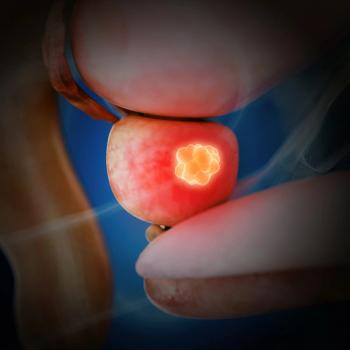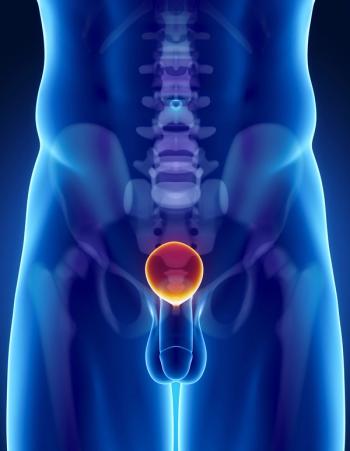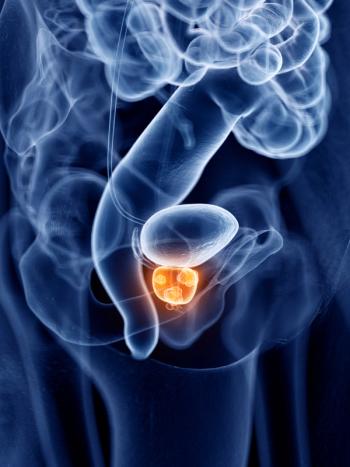
Oncology NEWS International
- Oncology NEWS International Vol 5 No 7
- Volume 5
- Issue 7
AUA Papers Confirm Value of Free PSA
ORLANDO--An assay that measures the proportion of free and bound prostate-specific antigen (PSA) has been found to discriminate between prostate cancer and benign conditions that elevate PSA, thus reducing the rate of unnecessary biopsies, several research groups reported at the American Urological Association annual meeting.
ORLANDO--An assay that measures the proportion of free and boundprostate-specific antigen (PSA) has been found to discriminatebetween prostate cancer and benign conditions that elevate PSA,thus reducing the rate of unnecessary biopsies, several researchgroups reported at the American Urological Association annualmeeting.
"It is about the best test that you can use to detect prostatecancer in men with a mildly elevated PSA and a slightly enlargedbut benign-feeling prostate," said William J. Catalona, MD,professor and chair of urology, Washington University School ofMedicine. "We've finally got a test that improves PSA specificitywithout materially compromising its sensitivity."
At least eight presentations at the AUA meeting confirmed thevalue of measuring the free-to-total PSA ratio, also known aspercent free PSA (PSAF).
The blood test measures the proportion of free vs complexed (orbound) PSA. Untreated prostate cancer has been associated withlow percentages of the free form of PSA, while high percentagesof the free form most commonly occur with benign conditions. However,there is a controversy over where the cut-off should fall.
Alan W. Partin, MD, associate professor of urology, Johns HopkinsSchool of Medicine, found that using a PSAF cut-off between 16%and 20% permitted detection of 90% of prostate cancers, whilereducing unnecessary biopsies by 30% to 40%.
But different PSAF cut-offs were proposed by some other investigators.Dr. Catalona's series pointed to a cut-off value of 23%, whichinsured that 90% of prostate cancers were detected, while 33%of unnecessary biopsies were eliminated.
Joseph E. Oesterling, MD, professor and chair of urology, Universityof Michigan, found that use of PSAF in a group of men with totalPSA levels between 3 and 4, who would not normally undergo biopsy,increased prostate cancer detection by 44%. "Generally, thecancers we found in this group were the early, curable cancers,"Dr. Oesterling said. For patients with a total PSA level of 4to 10 ng/mL, using PSAF reduced the number of negative biopsiesby 15%, he said.
Based on these results, Dr. Oesterling believes that all totalPSA results between 3 and 10 mg/mL merit a test to determine PSAF(see figure ), and he suggested the following cut-offs: When totalPSA is 3 to 4 ng/mL, a biopsy is suggested for patients with PSAFof less than 19%. When total PSA is 4 to 10 ng/mL, a biopsy issuggested with PSAF of less than 24%.
At the 19% cut-off with normal total PSA level, PSAF has a 90%sensitivity. "With this approach, 1.7 biopsies are performedto detect one cancer," Dr. Oesterling said. Using a 24% cut-offfor men with mildly elevated total PSA, sensitivity is 95%, and13% of negative prostate biopsies can be eliminated.
Trade-Offs
There was also wide variation in how urologists view specifictrade-offs between missed cancers and reductions in unnecessarybiopsies. "I am betting you urologists won't buy into PSAFas a single input variable because they won't want to give up10% of cancers to save even one third of biopsies," saidThomas Stamey, professor of urology, Stanford University Schoolof Medicine. "Where I think PSAF can be used," he added,"is as one of several probability factors considered alongwith other variables."
Several researchers at the meeting, including Dr. Partin and Dr.Oesterling, endorsed a strategy using relative risk probabilityranges. Doctors could then select the risk level with which theyare most comfortable. One manufacturer of a PSAF assay, Dianon(Stratford, Conn), introduced such ranges at the meeting. OtherUS manufacturers of the test are Abbott, Hybritech, Ciba-Corning,and UroCor.
The test could also have advantages in terms of cost savings."Even if the test doubled the cost of PSA testing for thissubset of patients with moderately elevated PSA and a benign-feelingprostate," Dr. Catalona said, "it still would comparefavorably with the $1,100 cost of an ultrasound and biopsy ofsix cores of tissue."
Articles in this issue
over 29 years ago
Princess Diana Helps Raise Over $1 Million for Cancer Researchover 29 years ago
Study Gives Terminal Patients Option: $18,000 or More Treatmentover 29 years ago
Proven: Colorectal Screening Cuts Deaths 50%over 29 years ago
Virtual Colonoscopy Technique Feasible in Detecting Polypsover 29 years ago
Trimetrexate Appears Beneficial in Colorectal Cancerover 29 years ago
FDA Liaison Program Answers Patients' Questions About Trialsover 29 years ago
New Company Joins With RPR To Develop Intrabody Technologyover 29 years ago
More Insurers Covering ABMT, Despite Lack of Efficacy Dataover 29 years ago
CDC Says Teen Smoking Still RisingNewsletter
Stay up to date on recent advances in the multidisciplinary approach to cancer.



















































































